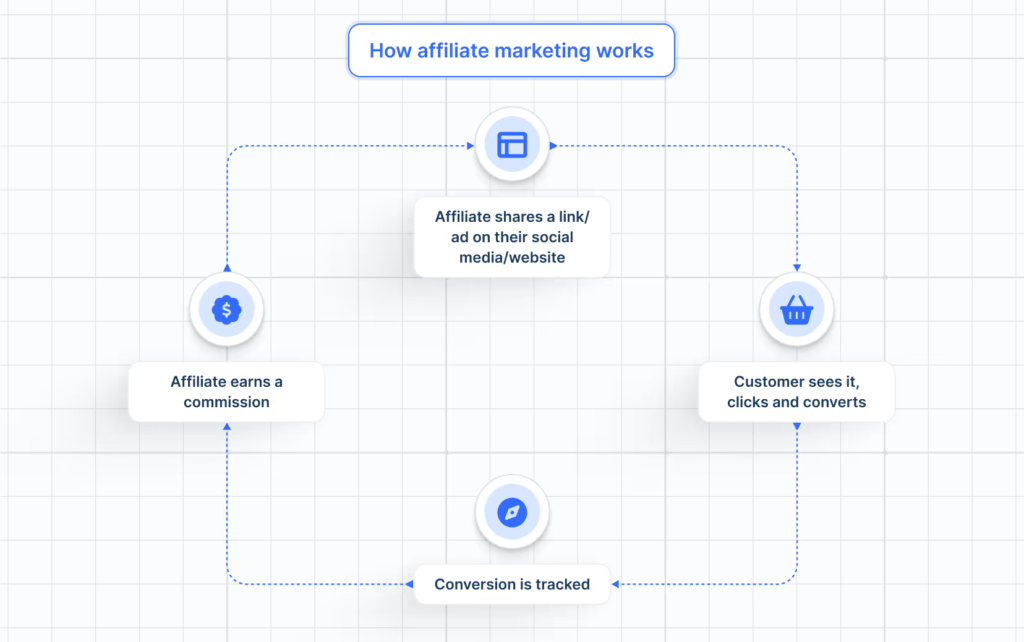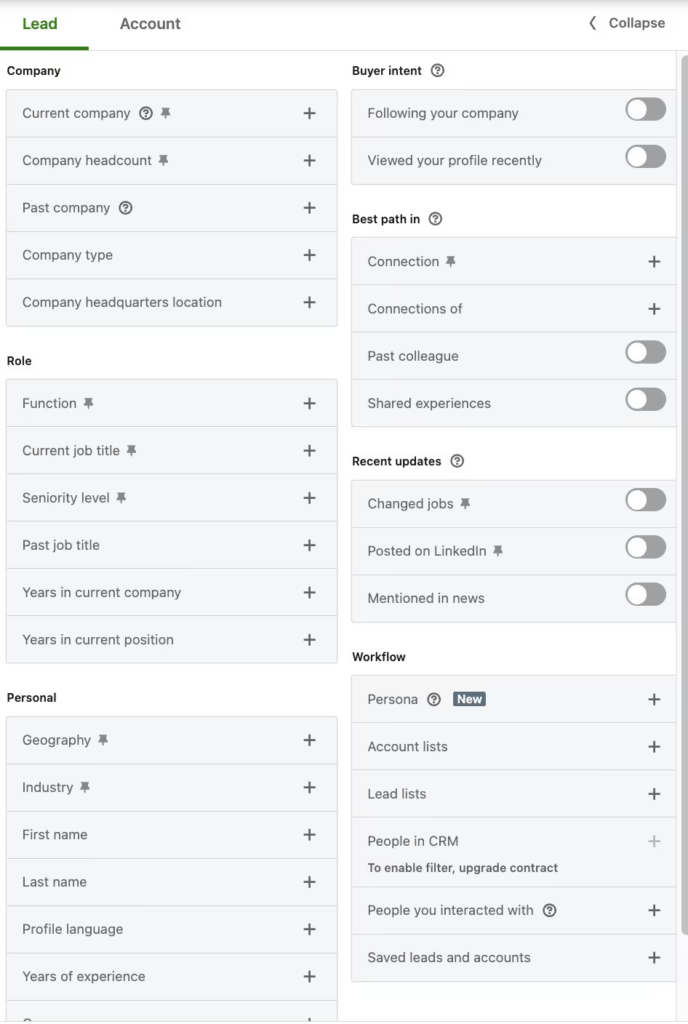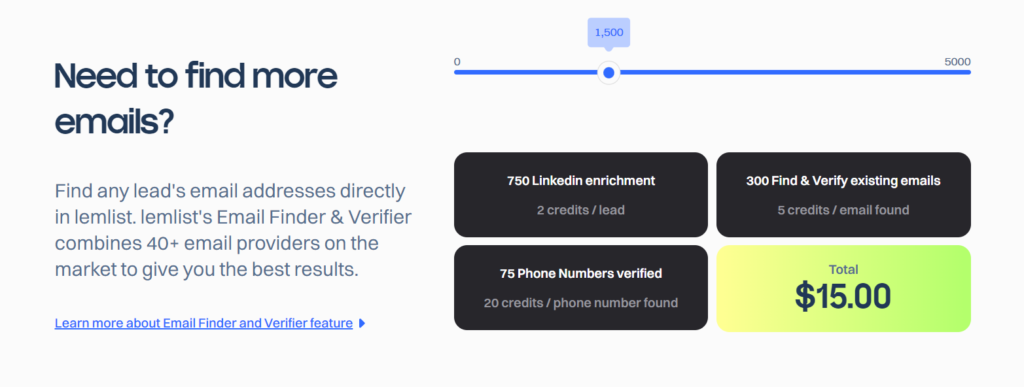You need to spend money to make money!
And to make money, you’re going to need some clients. The thing is, you need leads before you get clients.
You won’t be able to do much without a lead generation tool.
But it’s just fair that when choosing one, you have to know how much lead generation will cost.
What is lead generation cost?
Before diving into the main issue, you may wonder what lead generation is and why it’s important.
Lead generation is essentially the process in which you gather and create a list of potential clients.
Before you start calculating or thinking about the cost of generating your leads, you must bear in mind that not all leads are going to become paying customers or clients.
Depending on your client acquisition strategy, less than 10% of leads will convert to clients.
So, when setting up your budget, don’t aim for the total number of clients you expect. Leave some room for churn and rejection (it’s not pretty, we know).
So, lead generation cost comes down to the amount of money you spend in gathering your list of potential clients.
Your lead generation cost is going to be dependent on a variety of different factors, as not all businesses have the same needs or even conversion rates.
The lead generation cost for a small business will be significantly lower than for a large enterprise, due to budget availability or client need.
There will also be a difference for new businesses and businesses that already have a pretty solid client base. The latter will need to invest much less in lead generation. Having a solid client base means that your inbound sales are going to do most of the job. But building a new business requires getting the word out, so that leads to a higher investment.
Ways to generate leads
Before calculating the total cost, you need to have your set of strategies in place to be able to adjust accordingly.
First, we’ll be looking at ways to find leads in a conventional way, but don’t leave because we will also be discussing methods that will make your lead generation cheaper.
- Affiliate programs
This method involves a mouth-to-mouth approach, where you offer your current clients the possibility to receive benefits when they promote your business or if they bring new leads or other paying customers.
The benefit of this method is that you’re leveraging social proof. People are more likely to trust the word of someone who they look up to or better yet, someone who isn’t directly involved in the business.
Also, you’re guaranteed that your lead will feel motivated with every client they bring you, and will continue to bring more business.

The downside is that you have to be very careful with the rewards you offer. If your affiliate program doesn’t work as it should, you’ll be losing more money than you’re bringing in.
That being said, the average cost could be around $73 per lead.
- Buy lists of leads
When you buy lists, you’re saving yourself hours of manual work. The list is complete with (allegedly) quality leads that you can reach out to.
The main benefits of this method are that it is cost-effective, saves time, and gives you access to a targeted database with valid contact information.
However, this method is tricky. You need to find a highly reliable source because scammers can take great advantage and sell fraudulent lists of leads, that are not compliant with GDPR
Although this is a cheap way to get leads, it is not safe or scalable, as once you’re done with that list you’ll have to find another.
With this method, lead generation cost can range between $0.10 to $1 per lead. The total cost will depend on the amount of leads in your list.
- LinkedIn searches
You can build your list of leads yourself by conducting your own searches on LinkedIn.
In this case, the cost will depend greatly on your pricing plan with LinkedIn. So will the efficiency of your searches, as the amount of searches varies between plans.
With LinkedIn, you simply have to use filters to narrow down your ICP. Bear in mind that using Sales Navigator for this purpose is much more efficient.

Once you’ve gotten the results, you can run through them and select your top leads.
However, bypassing LinkedIn’s limits can be tricky and time-consuming.
Worry not; we have the solution. We’ll get to it later on.
- Databases
This method is similar to buying leads and LinkedIn searches.
A lead database holds a large number of contacts that can be filtered and offers the lead’s name, job title, company, and contact info such as email, phone number, and LinkedIn profile.
Again, if you go for this method, make sure you hire a trustworthy database by checking reviews in G2 or Capterra to make sure that their information is relevant and accurate.
The biggest benefit of a lead database is its ease of use.
In this case, the cost will depend on the database you’re using, but the price is similar to buying leads: $0.10-$1.
- Paid ads
With paid ads, you’re investing in reaching your target audience more organically. Instead of you having to go out and find them, the algorithm will find them and bring them to you.
Additionally, you can get detailed analytics to see how your ads are performing and if they’re bringing in the traffic you need.
With specific searches, your ad will pop up and answer a question your potential leads may be asking themselves and offering them an instant solution.
However, the downside of this method is that it can get pretty expensive.
The most common paid ads are on Facebook ($0.44 per click), Google ($2.59 per click), and LinkedIn ($5 to $10).
- Lead generation agencies
This is probably the most expensive method, although it’s the most comfortable one too. You just have to sit back and let the agency take care of the rest.
However, it can be dangerous, too. Do your research before you hire an agency to ensure that they are not fraudulent.
When you hire an agency, they’ll take care of finding leads and nurturing them until you’re handed a list of leads who have scheduled a demo or have converted into clients.
The total cost can range between $2,000 to $10,000 per month.
How can you reduce lead generation costs?
Generating leads is crucial, but it can get expensive pretty quickly.
However, there are ways to reduce your expenses and set up a lead generation strategy to make sure you’re making the most out of it and not wasting resources unnecessarily.
These are some of our favorite methods:
Qualify your leads
When building your list of leads, you should avoid adding every person and every email you come across in your searches.
You need to make sure that you are buying high-quality leads, what does this mean?
High-quality leads are not just leads who are known to make good investments or who are good people, for that matter.
High-quality leads are those leads who perfectly align with your product/service and any specific campaigns you may be running at the time.
Not everyone will be a right fit for you and you won’t be a right fit for everyone, so you should take some time and analyze this first. By qualifying your leads before you start contacting them, you’ll increase your chances of reaching high conversion rates.
The first thing you want to do is define the kind of person you’re looking for. In other words, define your ICP or your buyer persona. This is a fictional representation of your target audience and will help you narrow down your searches.
We’ll leave you with this persona generator so that you can save yourself the trouble:
- Segment your leads
When building your list of leads, being aware of your next steps is helpful.
For this reason, you can categorize your leads to help you tailor your sales efforts more effectively and personalize them more along the line.
By setting more efficient strategies that completely adapt to your leads’ needs, you will see better results per campaign.
- Be aware of buyer intent signals
Buyer intent signals are little clues that tell you if someone is ready for your product or service.
An example could be if a lead has received recent funding. You don’t want to be badgering potential clients at a time when they’re low on cash flow because they’ll ignore you completely, however, reaching them when they’ve just come into funding you need to be the first to offer a great solution that will make it worth their while.
You can also see who has been visiting your website or LinkedIn profile; this will help you gather warm leads rather than cold leads.
There are many other signals out there; you simply have to include them in your ICP and look out for them!
Lead generation software
Sales Reps spend, on average, 21% of their time on lead generation, so investing in a good tool seems like a priority.
Lead generation software is, in its definition, a tool that helps you generate leads. With this type of tool, you get many benefits:
- Cheaper than a lead generation agency
- You take charge of your leads yourself
- You find up-to-date data
For example, lemlist, a sales engagement platform, is an excellent solution for generating and managing your leads quickly. If you wonder how much leads cost in lemlist, it depends on your subscription plan and the credits you get.
Here’s a quick breakdown of how mush you can expect to pay for lead generation in lemlist:
| Free plan | Email Pro | Multichannel Expert | Enterprise | Additional credits |
|---|---|---|---|---|
| 500 credits | 1000 credits | 1500 credits | 2500 credits | $0.01/credit (example: 100 credits → $1) |
| 25 emails/week | 2000 emails/month | 300 emails/month | 500 emails/month | example: 20 emails |
| phone number search unavailable | 50 phone numbers/month | 75 phone numbers/month | 125 phone numbers/month | example: 5 phone numbers |
Aside from finding a lead generation tool that has good reviews, is reliable, and offers current data, there are 3 more factors that your software should have to make the most out of it:
- A people/lead database
Make sure it’s as complete as possible, meaning you can find contact info such as email and phone number (important to include phone number because most buyers still appreciate you taking the time to call them), and you can also find company, location, etc.
With your lemlist, you can also run Company searches.
By using the advanced filters, you can find companies that fit your ICP and access contacts within the company. lemlist reveals phone numbers and email addresses for decision-makers, making it easy to connect with prospects that matter to your business.
- A Chrome extension
LinkedIn is a great platform to find leads, so it makes sense to invest in software that offers a Chrome extension that will allow you to scrap the contact information of any useful leads you may find.
Whether it’s someone who has engaged with your content or potential leads you find on LinkedIn or Sales Navigator searches.
Check out lemlist’s Chrome extension:
- With CRM
With a customer relationship management system you will be able to manage all of your contacts to make contacting them much more efficient.
With the right tool, you can save time and money on other time-consuming tasks like lead nurturing and outreach!
Don’t sleep on inbound sales
Rather than investing all of your time and money in searching for leads yourself, set up a strategy that will convince them to come to you.
This can be achieved by creating an SEO-optimized content strategy. You may have to invest in content writers and SEO specialists, but it will be worth it when those inbound sales start rolling in.
Not to toot our own horn, but at lemlist we drove our organic traffic x10, which led to a massive increase in sales.
By setting a content strategy, you’ll be able to position yourself as a thought leader in your industry. When you gain your reader’s trust, it will be easier for them to go to you directly when they’re ready for your product or service.
Calculate your CPL
When you set up your lead generation strategies, you should consider calculating the cost per lead to see if you actually have a profitable strategy.
This is done by dividing the total cost of your lead generation by the number of leads generated.
CPL = Total Cost of Lead Generation ÷ Number of Leads Generated
If you want to calculate your CVR (conversion rate), divide the number of clients by the total number of leads generated.
Conversion Rate (%) = Number of Conversions ÷ Total Number of Leads
What is a decent cost for lead generation?
Once you have calculated your CPL, you can check with this list if your expenses are as they should be. B
| Industry | Average CPL |
|---|---|
| Marketing | $ 99 |
| Finance | $ 160 |
| Technology | $ 208 |
| Business Services | $ 132 |
| Media & Publishing | $ 108 |
| Consumer Products | $ 105 |
| B2B SaaS | $237 |
Cost of lead generation with lemlist
We mentioned that you’d need a tool that can take care of every step of the client acquisition process for you, so let’s talk about lemlist for a second.
With your lemlist subscription, this is what you’ll be getting:
- Lead generation features (people database, chrome extension, and email finder and verifier)
- Lead segmentation (with AI variables)
- CRM coming soon!
- Email warmup
- Personalized cold emails to contact and engage with your leads
- Detailed reporting and analytics
- Customizable booking page
- More deals closed!
How much do leads cost with lemlist?
With your subscription, you have an allotted amount of credits that you can use as you like. Moreover, you can purchase credits separately (even if you stick to the free plan).

With the pay-as-you-go system, this would be the cost per lead:
| Search | Credit amount per lead | Cost per lead |
|---|---|---|
| Verified emails | 5 credits | $0.05 |
| LinkedIn enrichment | 2 credits | $0.02 |
| Email verifier | 1 credit | $0.01 |
| Phone numbers | 20 credits | $0.20 |
Your source of actionable outreach tips and strategies that will help you get replies and grow your business.

